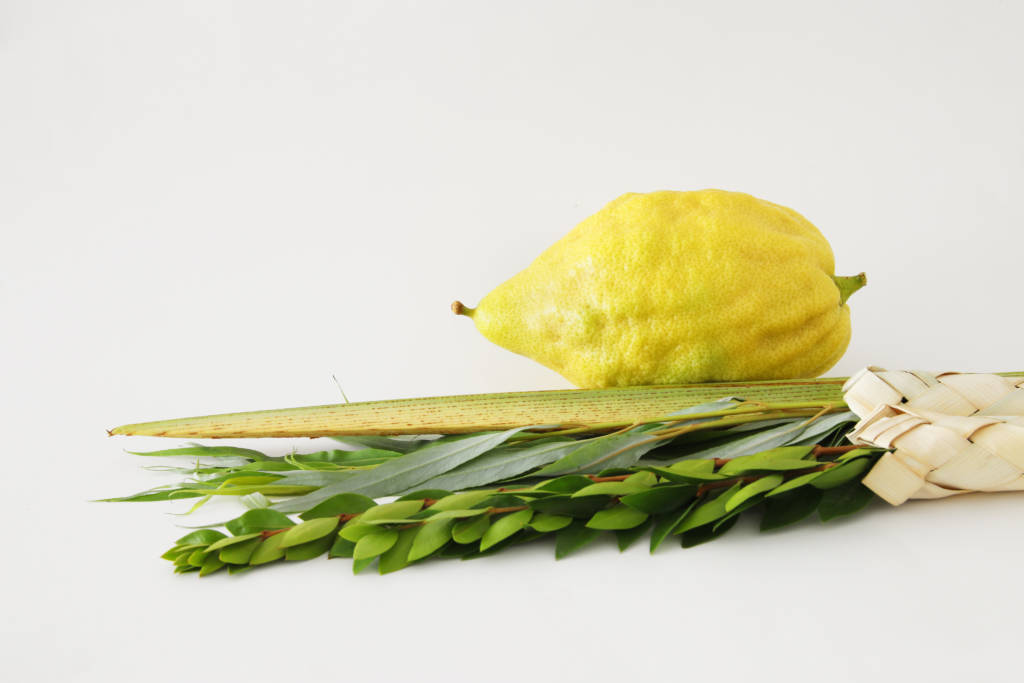Each person has positive attributes and negative attributes. Sukkot is a time for us to try and learn from the good that others have to offer.
By Rabbi Ari Enkin, Rabbinic Director, United with Israel
One of the two main observances of the Sukkot holiday is the shaking of the ‘lulav bundle’ (the other is eating and sleeping in the Sukkah).
There are a number of interpretations as to what the four species – a palm frond (lulav), an etrog (that’s fancy for “lemon”), 3 myrtle branches and 2 willow branches – known as the Lulav bundle, represent.
Let’s examine one of the famous Midrashic teachings on the “Four Species.”
“The etrog has both a good taste and a beautiful smell, and so too, the Jewish people includes individuals who have both Torah knowledge and do good deeds…. The date (represented by the pam frond) has a good taste but does not have a beautiful smell, and so too, the Jewish people includes individuals who have Torah knowledge but do not do good deeds…. The myrtle branches have a beautiful smell but not a good taste, and so too, the Jewish people include individuals who do good deeds but do not have Torah knowledge…. The willow branches have no good taste and no beautiful smell, and so too (very unfortunately!) the Jewish people includes individuals who do not have Torah knowledge and do not do good deeds….
Nevertheless, God says: “Let them all be bound together to atone for one another.”
It is noted that the Midrash (Rabbinic literature) does not simply say that “everyone is important,” “everyone has a role to play” or that “people are different” or any of the like. Rather, the Midrash concludes by telling us that the Four Species, representing the four types of Jews, “all atone for each other.”
This implies that each of the Four Species possess something that the others do not, and by binding them together they “atone” or “compensate” for what the others are missing.
Sukkot is traditionally the holiday when Jews spend a lot of time together. Nightly parties are held every day of Sukkot. They are known as “Simchat Beit Hashoeva” parties. Lots of connecting, lots of socializing, lots of sharing.
It can be said, therefore, that the Four Species bundle represents the idea that everyone’s good qualities should rub off on others. Each person has positive attributes and negative attributes. Sukkot is a time for us to try and learn from the good that others have to offer.
So too, we all need some “etrog” once in a while. The etrog is the most beautiful of the Species. It represents balance, mastery, and even humility owing to it being the smallest species. We must know that we are all have the potential to be an etrog.
The palm branches, representing Torah knowledge, are to remind us of the importance of Torah study, at any level, and at any amount. Sukkot, especially considering that Simchat Torah arrives at its conclusion, is the time for us to rededicate ourselves to Torah study.
The myrtle branches represent making the world a better place with more good deeds. That is always an important lesson to be reminded of especially at the start of a new year.
And, as we learned, the willow branches have absolutely nothing to offer. No taste, no smell. It is the “worst” of the Four Species. We must make sure we are never living like willow branches!
Do You Love Israel? Make a Donation - Show Your Support!
Donate to vital charities that help protect Israeli citizens and inspire millions around the world to support Israel too!
Now more than ever, Israel needs your help to fight and win the war -- including on the battlefield of public opinion.
Antisemitism, anti-Israel bias and boycotts are out of control. Israel's enemies are inciting terror and violence against innocent Israelis and Jews around the world. Help us fight back!
